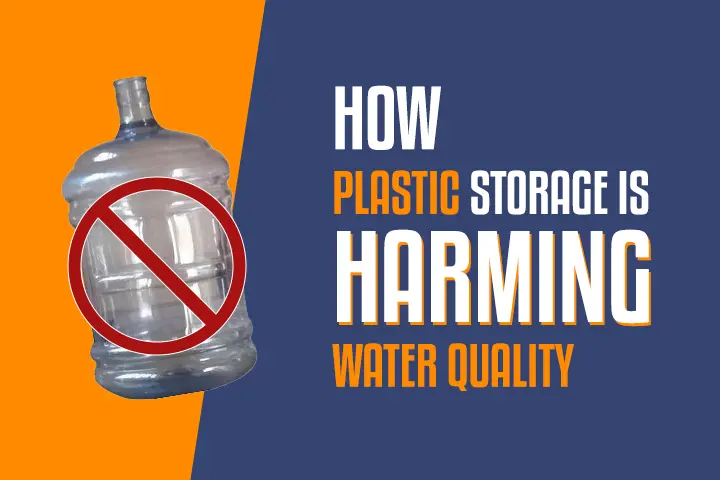
Water is the foundation of life, and ensuring its purity is vital for our health. While plastic containers have become a popular choice for water storage due to their affordability and convenience, they come with several hidden risks that can adversely affect human health. This article explores why avoiding plastic storage can improve water safety and protect overall well-being.
The Risks of Plastic Storage
Plastic water containers are often made from materials like polyethylene, polycarbonate, or PVC. Although these materials are lightweight and durable, they have been found to release harmful chemicals over time. Key concerns include:
Chemical Leaching: Plastics can release chemicals into stored water, especially when exposed to heat, sunlight, or prolonged use. Commonly leached chemicals include Bisphenol A (BPA) and phthalates, which have been linked to hormonal disruptions, reproductive issues, and other health problems. Even BPA-free plastics are not entirely safe, as substitute chemicals can still pose health risks.
Microplastic Contamination: Over time, plastic containers can degrade and release microplastics into the water. These tiny particles are not only harmful to human health but also contribute to environmental pollution. Studies have shown that microplastics can enter the body through drinking water and may accumulate in organs, potentially causing inflammation and other health issues.
Bacterial Growth: Plastic surfaces are prone to scratches and cracks, creating spaces where bacteria can thrive. If water containers are not cleaned regularly, they can become breeding grounds for harmful microorganisms, jeopardizing the safety of the stored water.
Benefits of Avoiding Plastic Storage
Switching to alternative materials for water storage can significantly reduce health risks and improve water safety. Some benefits of avoiding plastic include:
Elimination of Chemical Risks: Opting for materials such as stainless steel or glass ensures that harmful chemicals like BPA and phthalates are no longer a concern. These materials are chemically inert and do not leach substances into the water, preserving its purity.
Reduction of Microplastics: Durable and non-degradable materials like stainless steel and glass do not release microplastics into stored water. This not only improves health but also supports environmental sustainability by reducing plastic waste.
Enhanced Hygiene: Alternative storage solutions are less prone to bacterial contamination. Stainless steel, for example, has a smooth, non-porous surface that makes cleaning easier and more effective. This minimizes the risk of bacteria forming biofilms and ensures safer storage.
Best Alternatives to Plastic Storage
When considering alternatives to plastic water storage, the following materials stand out:
Stainless Steel: This material is durable, resistant to corrosion, and easy to clean. Stainless steel containers are ideal for both short-term and long-term water storage and do not alter the taste or quality of the water.
Glass: Glass is an excellent choice for storing water as it is non-reactive and free from harmful chemicals. Although it is fragile and requires careful handling, glass containers provide one of the safest options for maintaining water purity.
Ceramic: Ceramic pots have been used for centuries in water storage. They are naturally cooling, eco-friendly, and free from toxic substances. However, they are best suited for stationary use due to their weight and fragility.
Conclusion
Plastic water storage may seem convenient, but its potential health risks outweigh the benefits. By avoiding plastic containers and opting for safer alternatives like stainless steel, glass, or ceramic, individuals can protect their health, preserve water purity, and contribute to environmental sustainability. Water safety is a fundamental aspect of well-being, and making the switch to non-plastic storage solutions is a simple yet impactful step toward healthier living.


